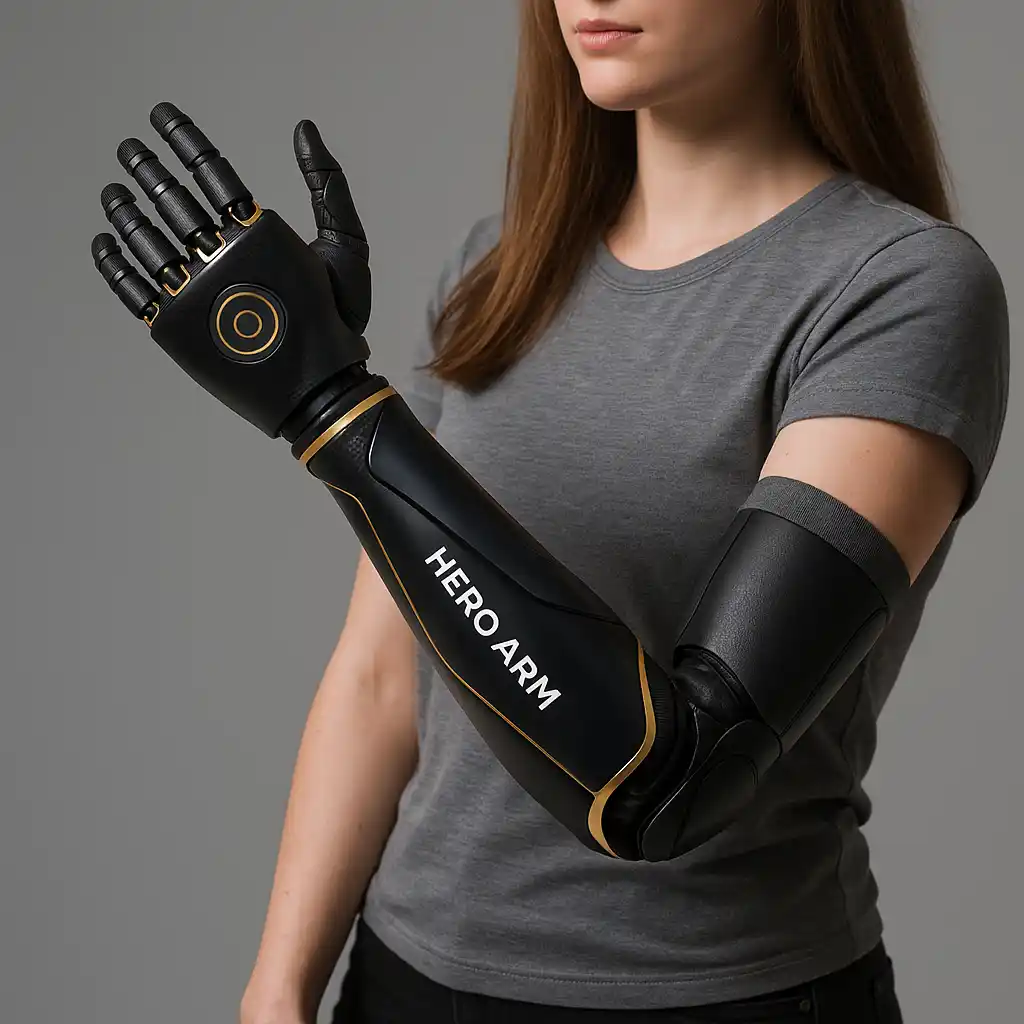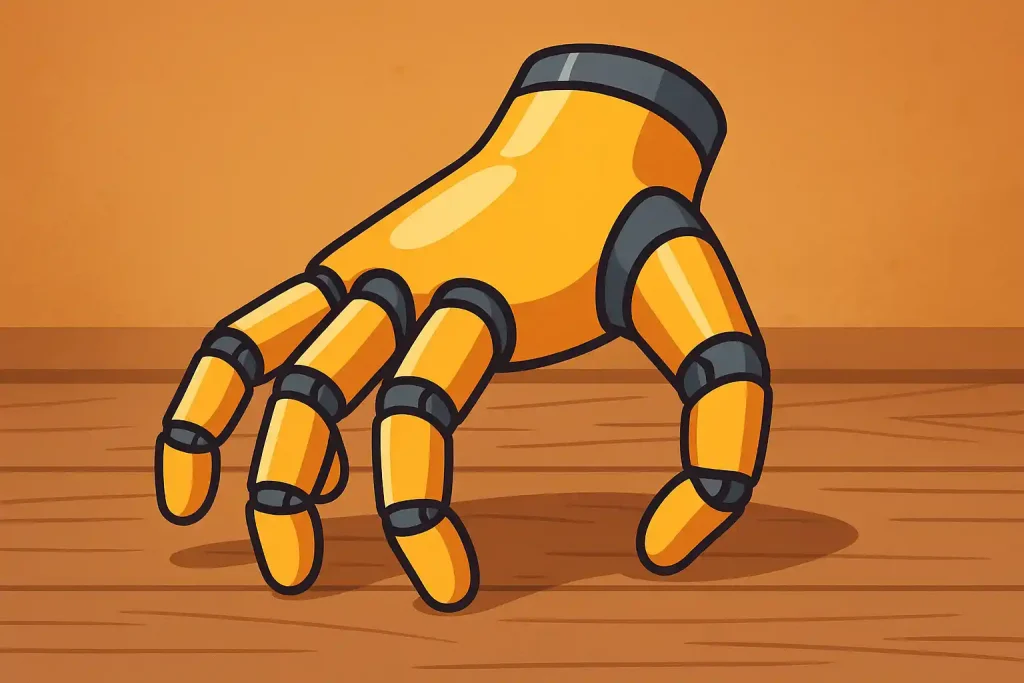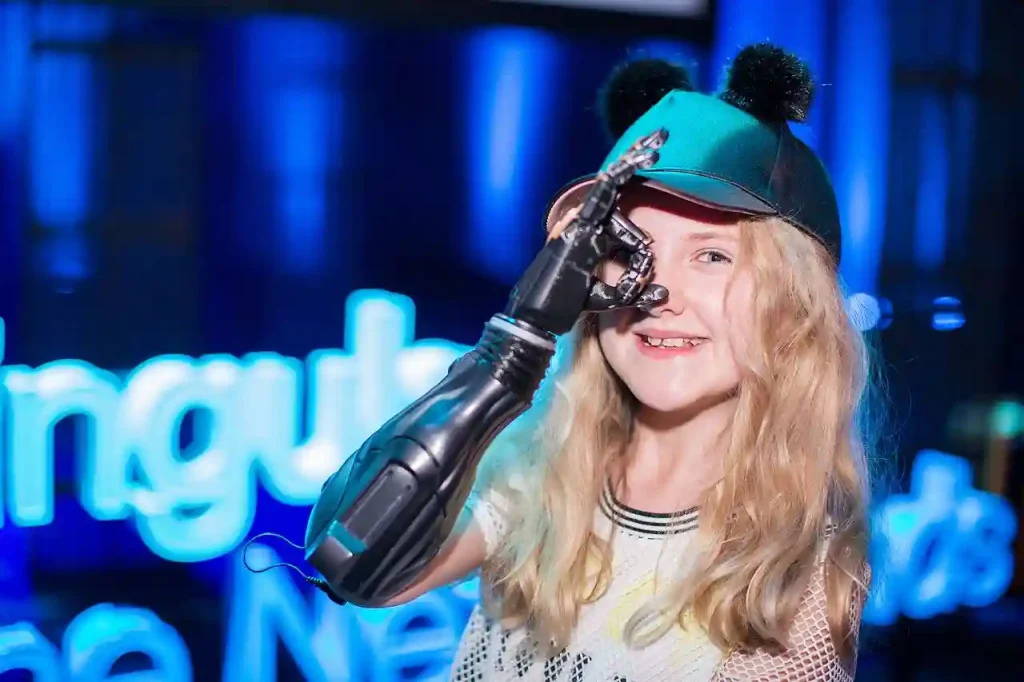The most exciting thing about Open Bionics’ latest launch isn’t the tech, it’s the shift in thinking. Instead of looking at people with prosthetic limbs with pity, it’s time to look at them with awe and envy!
Open Bionics is back, and it’s not playing safe. After years of evolving the world’s first medically certified 3D-printed bionic arm, the UK startup has now launched two new models: the Hero Arm Pro and Hero Arm R&D. One’s built for life, the other for the lab, but both are built for people. Whether you’re unlocking a front door or unlocking new robotics algorithms, this 2025 release sets a new benchmark for what a bionic limb can look like, feel like, and actually do.
The upgrades aren’t just cosmetic. There’s an entirely new muscle-sensing system called MyoPods. There’s a modular socket-less fit. And yes, one of them literally detaches and crawls across the floor. Forget futuristic, it’s functional, expressive, and a little wild. Just ask Tilly Lockey, the long-time Hero Arm user who helped launch it. This time, the future isn’t a concept. It’s already strapped on and ready to move.

The Hero Arm, upgraded
At first glance, the Hero Pro still looks like the old Hero Arm’s stylish cousin, sleek, expressive, and more like wearable tech than a prosthetic limb. But the inside? That’s where everything changes. The Hero Pro ditches old-school gel electrodes and embraces wireless EMG tech with a new sensor system called MyoPods. These lightweight modules sit directly on the skin over residual muscles and pick up subtle signals the user sends, letting the arm move accordingly.
It’s faster, cleaner, and doesn’t need a tight socket to work. That’s a big win for comfort, and an even bigger one for usability. You can wear it longer, calibrate it faster, and ditch the constant rewiring dance that defined traditional bionics.
Even more importantly, the upgrades came from the people who use the arm every day. According to Open Bionics, years of real-world feedback led to the Hero Pro’s updated fit system, power supply, and electronics. This wasn’t a lab experiment, it was a collaboration. Tilly Lockey, a long-time Hero Arm user and now brand ambassador, helped launch the new models this April, showing off just how effortlessly the device integrates into daily life.
With better grip strength, more responsive control, and a modular approach that works with different limb types, the Hero Pro isn’t trying to impress robots. It’s designed for people, especially those tired of prosthetics that feel more like prototypes. It’s available now in the UK, US, and Australia, and yes, it still looks like something out of a video game. That’s not a gimmick. That’s the point.

Crawling limbs and Open code
The Hero Arm R&D isn’t here to blend in, it’s here to get poked, prodded, and reprogrammed. Open Bionics built this variant as a research platform, giving developers direct access to every actuator, sensor, and grip mode. Want to test a new control algorithm? Plug it in. Need to gather data from the wrist rotation motor? It’s all there. And if you want to go full mad scientist, yes, the hand detaches and crawls.
While that reminds us of “Thing” from The Addams Family and would be awesome to prank someone with, it’s an integral feature that lets researchers explore mobility, remote control, or even limb repositioning for edge-case scenarios like disaster recovery or robotics testing.
According to the press release and coverage from Futurism, this crawling hand movement was more than just viral bait. It showcases how the R&D version lets researchers treat the arm as an open sandbox, an actual, working bionic system that doesn’t require thousands of dollars in lab infrastructure to test new ideas. You can write code and push it directly into the hand.
You can track how different users respond to changing grip feedback. You can even use it to test future AI-human interface modes without reinventing the wheel. Open Bionics designed the Hero R&D with developers in mind, people who need to build and break things fast. The goal is simple: close the loop between experimentation and application. And with both arms sharing a common design language, improvements in the lab could reach the real world faster than ever.
The future of Prosthetics
The most exciting thing about Open Bionics’ latest launch isn’t the tech, it’s the shift in thinking. Instead of viewing bionic limbs as clinical devices or sci-fi novelties, the company treats them like customizable tools made for real people. The Hero Pro proves that a limb can be responsive, expressive, and easy to wear, without sacrificing functionality.
The Hero R&D proves that researchers can test groundbreaking ideas on a real-world platform, not a dusty lab sim. Both share the same DNA: 3D-printed precision, modular fit, and wireless MyoPods that make setup less of a hassle and more of a handshake between user and machine. They’re also both wireless and waterproof!
In case you missed:
- NVIDIA’s Isaac GR00T N1: From Lab Prototype to Real-World Robot Brain
- Lab-Grown Brain Thinks It’s a Butterfly: Proof We’re in a Simulation?
- Quantum War Tech: DRDO and IIT help India take the lead!
- DeepSeek’s AI Revolution: Creating an Entire AI Ecosystem
- DeepSeek’s R1 upgrade takes on GPT-4 with some “rumoured” help from Gemini’s brain!
- Pi Coin vs Bitcoin: Round 2, Mainnet Launch
- Samsung’s new Android XR Headset all set to crush Apple’s Vision Pro
- India, iPhones, China & Trump: The Foxconn Story!
- Slaughterbots: Robot Warriors in the Indian Armed Forces!
- FraudGPT & WormGPT: Making Cybercrime Cheap & Effortless!










